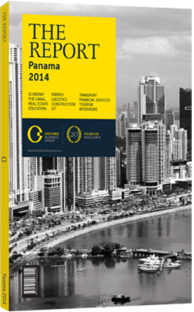Søren Skou, CEO, Maersk Line, on expansion and new opportunities

Efficient infrastructure is a key component to the creation of long-term growth and prosperity. When transport costs and time are reduced, goods and food can be produced where quality is high and labour costs low. Competitive local businesses can grow and consumers around the world can enjoy fresher foods and varied goods at lower prices. Last but not least, the amount of fresh food wasted due to inefficient transport can be significantly reduced. The Panama Canal has played a key role in saving fuel and money spent on seaborne transportation for almost a century. The waterway is a marvel of engineering and it has opened up markets and supported economic development in the South and East like few other projects around the world. Its strategic location makes it a chief revenue source for Panama and one of the main reasons why the country is Maersk Line’s fifth-largest hub in our global container network, meeting trade needs from east to west, north and south, and serving as the platform for our intra-Americas operations. It is important to Panama and to Americas-related trade that the canal stays up-to-date in terms of capacity, operational efficiency and cost levels. The average vessel size has increased significantly in recent decades, and the canal has quite obviously required expansion. In these times of economic slowdown, a larger waterway is a must to help provide supply-chain efficiencies for both developing and emerging economies. Panama, a country with a long maritime history, is not resting on its laurels, taking the necessary steps to continue writing the history books for the next chapter of international trade, just as they have been doing for the past 100 years. Exciting times lie ahead for the population of 3m, and the international business community has its eyes on this Central American nation. It is likely that over time, the expansion will affect the deployment of vessels through the canal by attracting bigger, newer ships depending on the demand growth in the Americas. This development has the potential to reduce the cost and fuel consumption per container due to economies of scale, with positive side effects on the environmental footprint of the shipping industry and that of its users. At the same time, this change opens up the possibility of transforming the surrounding logistics landscape, including ports, rail, logistics centres and multimodal networks, across the east coast of the US, Central and South America, and the Caribbean, as they prepare to accommodate larger vessels. Longer term, the expansion might also affect trade patterns. 55% of the containerised cargo to the east coast of the US from Asia goes via the Suez canal, while 45% of cargo passes through the Panama Canal. This ratio could be slightly altered. If the size of ships from Asia going via Panama could be further increased, it might make economic sense to let them continue across the Atlantic to Europe instead of passing through Suez. The expansion is also set to impact container traffic railed across the US. Sourcing from competitive labour markets in Latin America to the east coast of the US might also improve. In order to achieve the full potential of the expansion, the cost of using the canal cannot rise, as users of the waterway we have a direct interest in this, and it should also be a concern for Panama. Keeping a competitive pricing structure that distributes the transit costs fairly between containers, bulk, energy and others, while expanding the current business model towards new areas, will have an impact once the expansion works are finalised and access to the waterway is ready. Many container routes going through canal are already suffering losses, and pricing structure and levels will have a major impact on how shipping groups react to the expansion with regard to route planning and whether Panama will become more or less attractive for carriers. Plans to construct a competing canal in Nicaragua may be hypothetical at this stage, but should it be realised, it will only emphasise this point.
Panama is ready to shape the future of global commerce in the region, boosting trade possibilities for itself and for other countries, and ultimately changing the face of Latin America infrastructure in the process.
You have reached the limit of premium articles you can view for free.
Choose from the options below to purchase print or digital editions of our Reports. You can also purchase a website subscription giving you unlimited access to all of our Reports online for 12 months.
If you have already purchased this Report or have a website subscription, please login to continue.

